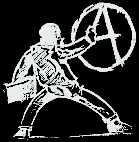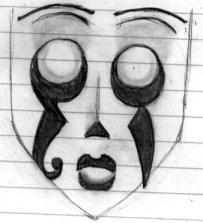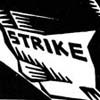|
|||||||||||||
|
By Punkerslut
Child Abuse has never been an acceptable practice in the heart of any humane person. It prepares the next generation for brutality and barbaric behavior -- what is called by its advocates as "discipline." Striking the flesh of an undeveloped child for the sake of achieving an objective is the most unsophisticated method of achieving that objective. It teaches cruelty and it inflicts scars on both the body and the mind. To think of the nights every abused child spends huddled in their room, pondering their worthlessness, the dark nights, the sting of a paddle -- to think of the tears and the blood torn from zestful youth for the sake of "discipline." Of all the cruelties committed, nothing can be so devastating as to bring a child into the world, only to teach it that it has no value, to beat it, to strike it, to make it know every abominable brutality ever known to man. Think of the trembling, small hands, afraid of their parents and always confused, always failing to understand why mother and father are quicker to deliver a painful touch than an affectionate touch. Of what viciousness it is needed to deal such blows, to deliver insurmountable pain, it is unspeakable to even think of the actions. By destroying the youth, riddling their lives with fear and distress, we accomplish nothing but the sorrows that will keep them up questioning the virtues of living. Science would confirm that such brutality is destructive. The light of reason has investigated the barbaric conditioning of Child Abuse. To quote one scientific article concerning child abuse and long term damage...
A plethora of horrific plights will infect those who are abused as a child. Abused children will suffer from suicidal thoughts and anxiety, pain and distress, feeling helplessness and worthlessness. It is clearly to be seen when under the microscope of science. There is no denying the truth of these statements.
I shall quote a rather extreme example of Child Abuse. The purpose of this example is not to render hearts merciless to the barbaric nature of this horrendous practice -- it is to provide a glimpse into what Child Abuse means, to provide an empathic touch of reason....
In this instance, the amount of cruelty and abuse was appalling. The mother who created this being, this child, with vindictiveness and heartlessness abused this child. She endeavored to cause pain to the son who adored her. She made him tremble, she made him scared -- she filled him with the pains and the blights that some of us cannot even imagine. The figure of a mother in our world has been endowed with so many responsibilities; yet this mother has made herself an unforgivable and cruel ignoramus. Compassion and affection were the virtues of this mother. She was not quick to offer a glance that would warm your heart. Her vice was brutality. She was not, that is to say, a Humanitarian. From Child Abuse, many individuals are likely to become Antisocial. One scientific article remarks on this...
Studies show that those who have been abused as children have a 113% higher chance of showing symptoms of temporal lobe epilepsy, which disrupts the functioning of the hippocampus and the amygdala. A review of brain-wave abnormalities in electroencephalograms (EEGs) of 115 patients to a child and adolescent psychiatric hospital showed that brain-wave abnormalities were in 54% of patients with a history of early trauma but in only 27% of non-abused patients. The reviewers concluded, "The irregularities arose in frontal and temporal brain regions and, to our surprise, specifically involved in the left hemisphere rather than both sides, as one would expect." In a cross study of 17 adult survivors of Child Abuse and 17 healthy subjects, all matched for age, sex, race, handedness, years of education, and years of alcohol abuse, those who were abused as children had a 12% smaller left hippocampus than those of healthy adults, but the right hippocampus was at normal size. (Again, the hippocampus is important in determining what incoming information will be stored in long-term memory.) In 1997, Murray B. Stein of the University of California at San Diego conducted a study on 21 adult women who had been sexual abused as children and found that the left hippocampus in these women was significantly reduced. In 2001, Martin Driessen of Gilead Hospital in Bielefeld, Germany, and his colleagues reported a 16% reduction in hippocampus size and an 8% reduction in amygdala size in adult women with borderline personality disorder and a history of childhood mistreatment. [Scientific information procured from Scientific American, March 2002, Scars that Won't Heal: The Neurobiology of Child Abuse.] To quote Martin H. Teicher concerning Child Abuse and damage....
Child Abuse is cruel and inhumane. To take someone so new, so vigorous, so fresh to the world, and strike them down with unbearable pains is vicious. Nothing can be said of it than that it is harshly unfair and barbaric in nature. Not only is it horrendous that children are abused, but it is often done by a trusted authority figure. It teaches the children that they should feel bad about themselves, that they deserve abuse because they do not hold a certain amount of worth. To take the initiative to bring a new life into this world and then to take no responsibility -- creating a life and causing it countless misery -- is one of the most horrific deeds imaginable. These are children of fear and abuse. The first thing they are taught is pain and the lesson comes from the one who reared them. There can be nothing so brutal and heartless as Child Abuse. Punkerslut,
|



